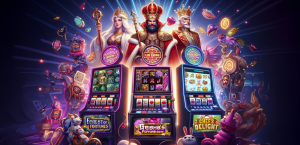
Color prediction games have surged in popularity, captivating players with their simplicity and fast-paced nature. While they may seem straightforward, these games are designed to keep players engaged for extended periods. The combination of psychological triggers, reward mechanisms, and social influence contributes to their addictive appeal. Understanding these factors can help players make informed decisions about their gaming habits.
The Thrill of Uncertainty
One of the most compelling aspects of color prediction games is the inherent uncertainty. Each round presents a new outcome, and the unpredictability creates a thrilling experience. The possibility of winning, coupled with the uncertainty of the result, triggers a rush of adrenaline. This sense of anticipation and excitement is a powerful draw, keeping players engaged and eager to play more.
Dopamine Release and Instant Gratification
When players anticipate a potential win, their brains release dopamine, a neurotransmitter associated with pleasure and reward. This biochemical response reinforces the behavior, making players feel good and encouraging them to continue playing. The cycle of anticipation and dopamine release creates a positive feedback loop, contributing to the addictive nature of the game.
The quick turnaround of each round provides instant gratification. Players do not have to wait long to see the results of their bets, which keeps the experience engaging and fast-paced. The immediate feedback allows players to experience the thrill of a win (or the disappointment of a loss) quickly, which can be highly satisfying.
The Illusion of Control
Despite being games of chance, color prediction games often give players the illusion of control. By making choices and placing bets, players feel they have some influence over the outcome. This sense of control, even if it’s not entirely real, can be highly addictive.
Humans are naturally inclined to seek patterns, even in random events. Players may believe they have identified trends or patterns in the game’s outcomes, leading them to think they can predict future results. This perceived ability to predict and control the game increases engagement and keeps players coming back for more.
Variable Rewards and Unpredictability
The concept of variable rewards is another psychological trigger that fuels addiction. When wins are unpredictable, players are more motivated to continue playing, as they never know when the next positive outcome will occur. This uncertainty mimics the same psychological response seen in gambling, making color prediction games highly engaging. The excitement of “one more try” can keep players immersed for extended periods.
Social Influence and Competition
Many color prediction games incorporate social features, such as chat rooms, leaderboards, and multiplayer options. These elements add a layer of social interaction and competition, which can enhance the addictive nature of the game. Players feel motivated to outperform their peers or showcase their success. Additionally, peer encouragement can create pressure to keep playing, especially in competitive gaming environments.
The Impact of Visual and Sound Cues
Color prediction games often use vibrant colors, animations, and sound effects to stimulate the senses. These design elements are strategically chosen to keep players engaged. For example, flashing visuals after a win or upbeat sound effects can reinforce positive behavior, encouraging players to continue playing. Over time, these cues become deeply associated with excitement and success, strengthening the habit.
Escapism and Emotional Relief
For some players, color prediction games serve as a form of escapism. The fast-paced nature of the game provides a distraction from stress, boredom, or daily challenges. Winning moments create a temporary sense of achievement, offering emotional relief. However, excessive reliance on gaming for emotional comfort can lead to compulsive behavior.
How to Maintain Healthy Gaming Habits
While color prediction games at Daman games can be entertaining, maintaining healthy gaming habits is essential. Players should set time limits, avoid chasing losses, and recognize the psychological triggers that influence their behavior. Understanding the mechanics behind addiction helps individuals make informed choices and enjoy gaming responsibly.
Conclusion
Color prediction games are designed to be engaging and immersive, leveraging psychological triggers such as uncertainty, dopamine release, and social influence. While these elements contribute to their addictive nature, players can take proactive steps to maintain balanced gaming habits. Recognizing the factors that make these games compelling allows individuals to enjoy them responsibly while avoiding excessive play.

